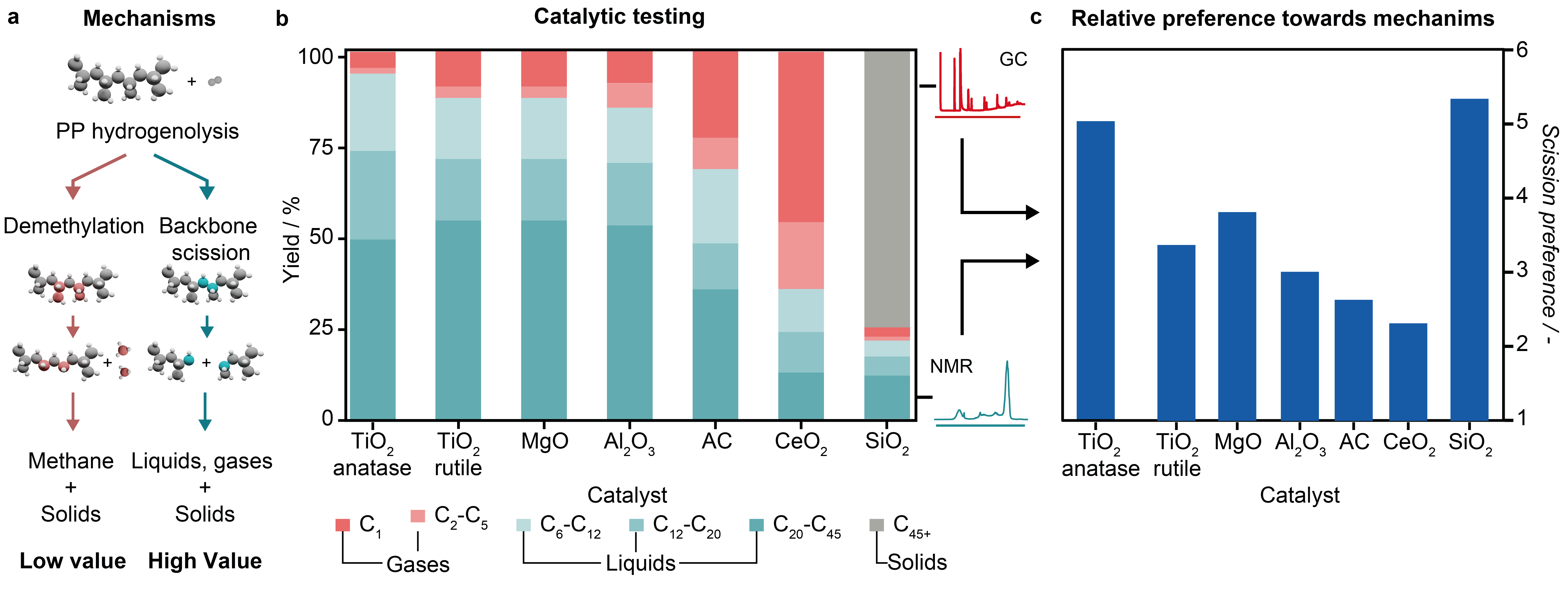Recycling of waste polypropylene into high-value liquid hydrocarbons
The exacerbation of plastic pollution has escalated the necessity to devise efficient chemical valorization routes to meet global recycling goals. Constituting nearly 30% of all plastic waste, polypropylene (PP) poses a challenge to chemical processing due to its branched structure leading to greater chemical resistance.[1, 2] Among prospect chemical routes, hydrogenolysis of polypropylene on Ru-based systems exhibits promising activity but favors the formation of methane over high-value liquid products (Fig. 1a).[3] Unavailability of sufficient data on reactivity trends hinders the realization of the full potential of such catalysts. More specifically, the exclusive attention paid to the metal phase so far leaves behind the role of the carrier, which could be critical to unlocking effective catalyst design. We have developed Ru-based catalysts on various carriers unveiling the indispensable role of the latter in steering the cleavage away from demethylation towards backbone scission which helps achieve up to 90% liquid yield (Fig. 1b). We have quantified the relative occurrence of the two mechanisms by formulating the scission preference through use of product characterization data obtained using an accessible 1H-NMR data. Titania (anatase), displayed up to 5 backbone scissions per demethylation event as opposed to 3 with its rutile polymorph and only 2 for ceria (Fig. 1c). This highlights that using ceria as carrier makes the formation of low-value methane thrice as likely as when using titania(anatase). Experimental correlations point to the distinct hydrocarbon affinity of the carriers as a reason for this phenomenon. This work paves the path towards practical Ru-based catalysts and provides universal tools for ranking of catalytic systems.

Fig. 1a Two main mechanisms hydrogenolysis of PP. Backbone scission is preferred as it forms the more-valuable liquid products b Yields for methane, gas, liquid products, and solid residue for tested catalysts. The extent of methane formation varies widely across systems with different carriers, highlighting their influence on hydrogenolysis by Ru. All catalysts were tested at T = 523 K, P = 20 bar H2, t = 1 h and catalyst/plastic = 5 wt.%. c Scission preference of the tested catalytic systems quantifying the relative occurrence of the two cleavage routes followed for hydrogenolysis in each system.
[2] S.D. Jaydev, A.J. Martín, J. Pérez-Ramírez, ChemSusChem 2021, 14, 5179.
[3] J. Rorrer, G.T. Beckham, Y. Román-Leshkov, JACS Au 2021, 1, 8.